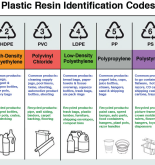It’s the last day of August and the time for the children to return to school.
The start of school is the ideal time to begin implementing greener ways you and your whole family can follow throughout the year. Here are the top ten suggestions for returning to school in a green manner.
Top Ten Eco-Friendly Back to School Tips:
Take a bike ride or walk to school as often as you can.
It’s enjoyable! Remember the excitement of riding a bicycle for the first time? Or walking to school for the first day?
There’s a sense of happiness and freedom – a sense of adventure that won’t diminish. Walking, biking or walking to school parents and children learn to notice things that they might not pay attention to while driving – listening at the sounds in the street, meeting neighbors and friends, and being a part of their community. Children, parents and friends are able to enjoy each other’s presence without distractions.
School trips that are active allow kids to get the physical exercise they require every day, while also developing healthy habits that will be sustained for a lifetime. Regular exercise helps children develop strong joints, muscles, and bones and reduces the likelihood of being overweight. However, lack of physical activity may contribute to chronic diseases like heart disease, diabetes, cancer, and stroke.
The U.S. Department of Health and Human Services suggests that adolescents and children have at least an hour of exercise each day. Studies suggest that children who are physically active are more likely to grow into physically active, healthy adults, highlighting the importance of establishing the habit of regular physical exercise in the early years.
When families decide to put on up their sneakers or put on their helmets for bikes to take their children to school instead taking a ride in a vehicle and thereby decrease pollution from air pollution produced by cars. Automobiles release a range of air pollutants, which result in an increase in the amount of the level of ozone in the ground as well as nitrogen oxides, and particulate matter , such as particles made up of dust, soot dirt, smoke, as well as liquid droplets.
Take the backpack from last year’s
You don’t have to purchase a brand new backpack because everyone else does. Don’t have to conform to the crowd simply because they’re more popular than you. It can be difficult to make this decision as a child, particularly in the middle school years where there’s plenty of pressure from the social world to adhere to. But I’m sure that when you grow older you’ll find that nobody is concerned about whether they’re “keeping up” with them or not. Stop comparing yourself with other people and focus on you.
Don’t feel pressured to purchase unnecessary items just because others are. You’ve got a great backpack that you love and would like to keep. Vintage is trendy in the present. The backpack you have is vintage and you can probably embellish it to make it more unique look since it’s in a weaning condition. Maybe later in the school year, you can get one to give you send a “hey y’all, I’m back for the new semester” update. Don’t buy anything that are based on what the rest of the world is doing.
Use the backpack from last year’s.
Make use of a lunchbox that is reusable and water bottle instead of using disposable
The most efficient way to eliminate packaging made of plastic and takeaway containers for lunch breaks is to cook your own lunch at home, and bring it to work with an insulated lunchbox. It’s the Food Pot. Food Pot is insulated for hot and cold food and ideal for any kind of food, from curry and rice to fruit salads or warm winter soups. Even even if you’re not cooking, having an insulated lunchbox can reduce waste. Consider asking employees at the favorite takeaway restaurant to serve your meal in your packed lunch box that’s insulated instead of a plastic container.
Stop generating wasteful plastic by using single-use plastics Choose one of these alternatives instead to lessen the footprint of your family.
Find organic and local food and snacks to pack into lunches
The process of making a meal that is healthy and delicious is simpler than you think. I recommend combining food items that are naturally delicious, sweet, savory, and delicious, and making the best decisions overall. In the case of grains Whole grains make the most nutritious option, and they are full of fiber. For vegetables and fruits I would suggest purchasing produce that is local, organic and in season, as it is the most delicious. To give your food a crunch I like to add some seeds and nuts.
Some excellent examples of food items that are delicious and nutritious include:
* Soy or almond butter
* Organic cheese
* Hummus
* Edamame
* Seeds, nuts and nuts
* Dried Fruit
* Cherry tomatoes
* Organic yogurt
Fresh fruit and other vegetables
Purchase recycled notebooks, paper and other materials
There are numerous environmentally friendly varieties of paper products. These American recycled items have the minimum of 30% waste from the post-consumer.
I’m pleased to have found high-quality notebooks that aren’t too harsh on the planet. My child has realized that buying these beautiful and vibrant notebooks and binders isn’t an ideal choice for the environment. She is having fun designing her own eco-friendly notebooks as well as binder. Another step towards a less expensive school supplies! Yes!
Use refillable pens & pencils
It doesn’t matter if you have an old-fashioned pencil sharpens or refillable mechanical pencils, even the most common brands are generally superior. You could also explore a refillable stainless-steel mechanical pencil. Unfortunately, the majority of refills for lead are packaged in plastic.
Purchase a canvas and cardboard binders instead of plastic
You can dispose of your cardboard in the trash. The fibers of vinyl will go into landfills. The main issue is when to use the binder made of plastic. Binders are among the most effective methods to organize your office or school materials in order. Because of their value their increasing usage in recent years. Binders are popular among college students, professors, as well as graduate school students for instance. In addition, outside of academics, people utilize it to store papers and bills in both office spaces and at home.
Yet regardless of their value they’re still alive. Of course, they will not last for ever. What happens when the life of your binder reaches an end? Do you have the option of recycling the binder? If you recycle used binders, how do you recycle them?
We’re betting that all of these are thoughts that are on your the back of your mind. These are legitimate questions. First, because of the increased binding industry there are more binders available. This means it could be dangerous and detrimental to the environment getting rid of your binder in the incorrectly.
Buy second-hand books
The socially responsible store that sells used and new books for sale at affordable prices. Good bookseller, with free shipping, who will donate a book with every book purchased. That’s fantastic. The environmental cost associated with producing books is enormous. The book and newspaper publishing industries use more than 153 billion gallons water every year.
It’s healthier for the environment. A new book purchase isn’t as easy as you imagine. There are two billion new printed books being produced by the United States. Do you require new books?
Purchase new school clothes at an online second-hand store
These are the clothes we insist on buying second-hand , and then passing them on.” Donate it to. Parents who aren’t keen on purchase a brand new uniform as they aren’t happy with the idea of their kids wearing previously worn clothing.
For most of our members the environmental impact is on top of their minds when they decide to avoid buying new clothes. While many of us are satisfied to buy used items but that doesn’t necessarily extend to school uniforms. Maybe the best option is to take a step further and eliminate school uniforms completely. However, if your school has uniforms, simply purchase second hand.
Remember to recycle
It is essential to know the recycling codes for proper recycling. Recycling helps reduce the need for extracting (mining quarrying, mining and the logging) as well as refining and transforming raw materials that all result in significant air and water pollution. Since recycling conserves energy, it also helps reduce the emissions of greenhouse gasses, which aids in tackling climate change.



